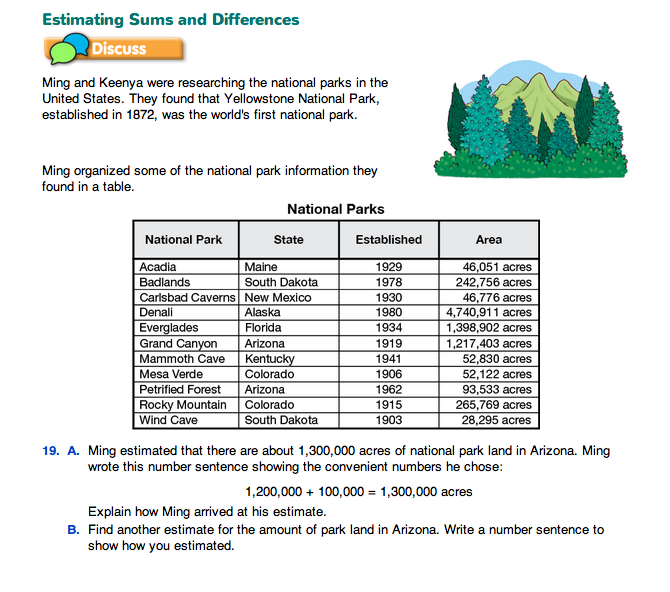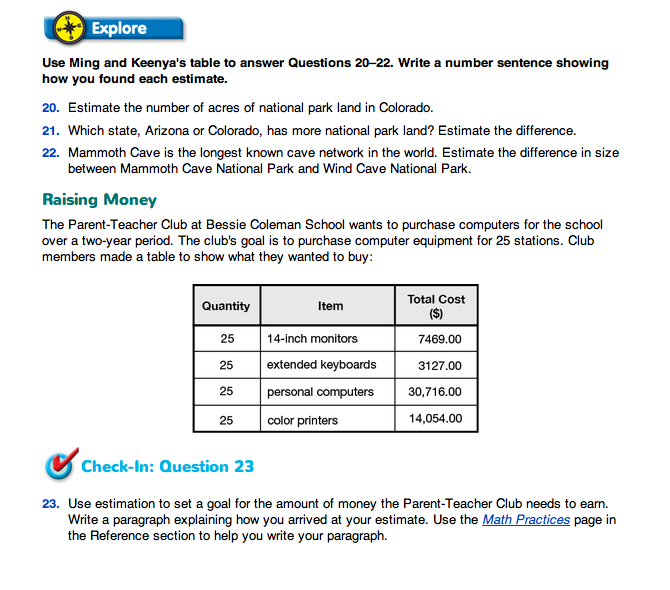Using Estimation
Est. Class Sessions: 2–3Developing the Lesson
Part 3: Estimating Sums and Differences
One of the reasons that we use rounded numbers is to estimate approximate answers when we compute. The Estimating Sums and Differences section in the Student Guide provides students with a context for using rounded numbers to add and subtract. Read the short vignette about Ming and Keenya. Look at the information contained in the National Parks table.
In Question 19, Ming has estimated that there are about 1,300,000 acres of national park land in Arizona. Ming has written a number sentence showing the rounded numbers that he chose. Students are asked to tell how Ming arrived at his estimate. Students should see that he rounded the acreages of the two Arizona national parks in the chart to the nearest hundred thousand and added these together. In Question 19B, students are asked to suggest a different estimate for this question. If students round 1,217,403 to the nearest hundred thousand and 93,533 to the nearest ten thousand, they may suggest that there are about 1,290,000 acres of park land in Arizona. Students might also round both numbers to the nearest ten thousand, suggesting that there are about 1,310,000 acres of park land in Arizona. Each of these estimates is acceptable.
Questions 20–22 provide additional practice with estimating sums and differences. Students are to write a number sentence showing how they found each estimate. All reasonable estimates should be accepted.
Assign Questions 5–12 in the Homework section after completing Part 3.













